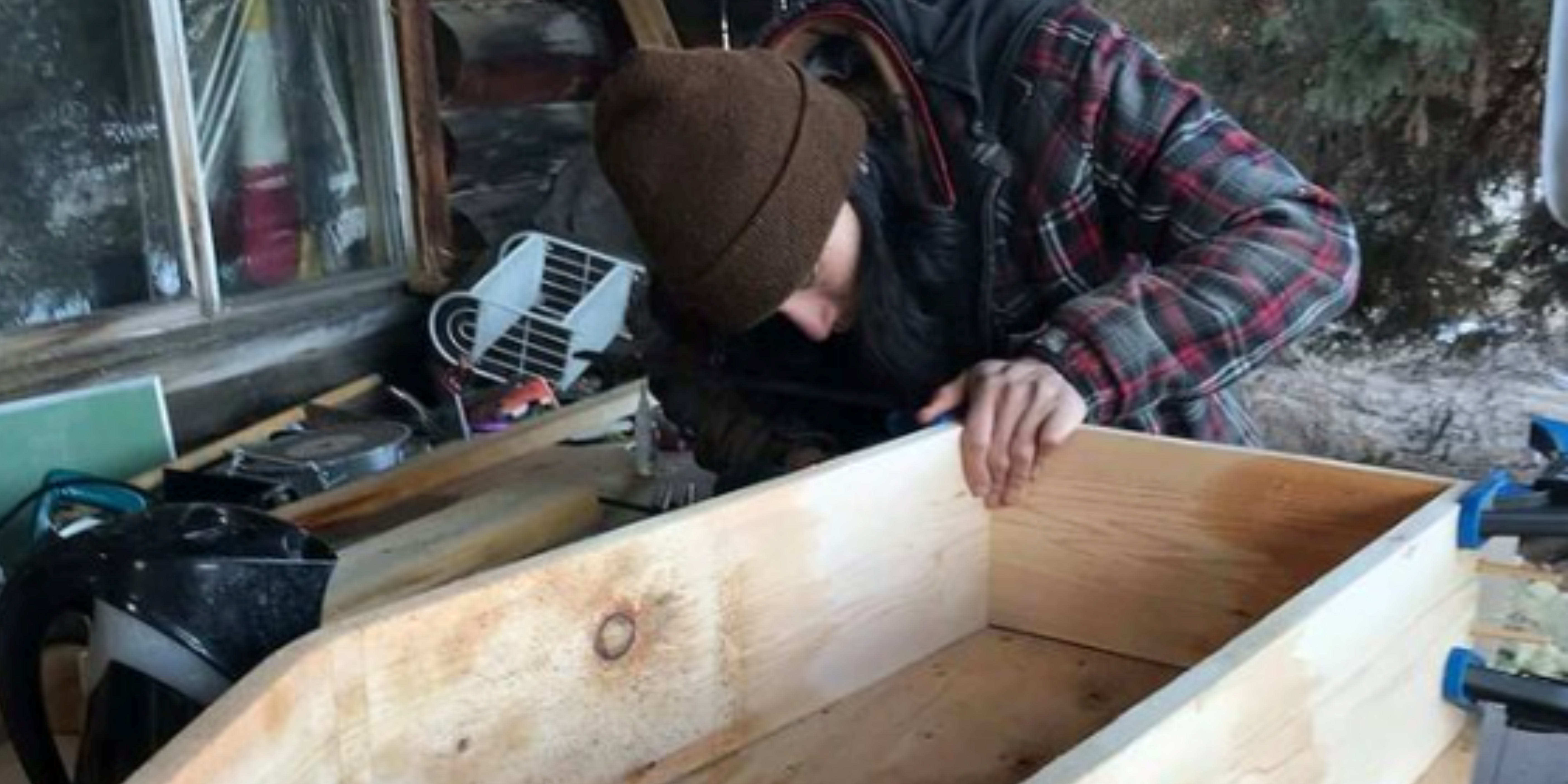
G̱alenḵ, a Symbol of Gitxsan Connection to Land
Sik-E-Dakh (Glen Vowell Band) bent box workshops use cedar to heal and revitalize Gitxsan culture
“Part of creating bent boxes is creating an intimate relationship with cedar,” says Denzel Sutherland-Wilson, a Gitxsan member of Wilp (house group) Git’luuhl’um’hetxwit from the Gisgaast Clan. Sutherland-Wilson is the son of ’Wii Muk’wilixw Art Wilson, a Gitxsan hereditary chief and one of the only non-commercial Gitxsan carvers in the community.
G̱alenḵ (bent boxes) have been historically important for the Gitxsan, Sutherland-Wilson explains. They are made out of a single piece of cedar maneuvered through steaming and don’t require screws or nails, the sides and base instead being held together by pegs.
The Sik-E-Dakh spearheaded an initiative to bring the knowledge of bent box carving back into the community by implementing weekly sessions led by Art Wilson for 10 members. Sutherland-Wilson, who volunteered with his father’s workshop, emphasized that G̱alenḵ, while often only considered art, are indeed a technology. They were historically used for everything from food storage to mortuary boxes to the storage of ceremonial items, honouring whatever was stored in them.
Sutherland-Wilson wants to deconstruct the idea that G̱alenḵ should solely be seen as fine art. He says there can be a range of skill that go into carving and while the boxes which master carvers make can be fine art, G̱alenḵ were once used as a part of everyday life. “What I’d like is to start seeing bent boxes pop up in everyone’s houses,” he says.
Survival through connection
An aspect of what makes bent box knowledge so key to the Gitxsan people is how fundamental cedar has been to the survival of the Gitxsan. In this way, bent boxes symbolize a “living relationship with the cedar tree” and ultimately, the land ,” Sutherland-Wilson says.
For Gitxsan people, working with cedar facilitates connection to all living beings. “[It’s] connection to your ancestors. It’s forcing you to slow down and focus on your relationship to another being,” he says.
Some members in the workshop were grieving family members they had lost and being able to work with the cedar helped their grieving process. Connecting to cedar is healing and meditative — the steam, smell, and learning the different ways cedar works and moves. G̱alenḵ requires good energy and focusing on this helps whenve going through hard times . Sharing the workshop with other members was also healing, allowing them to connect with each other through storytelling and learn more of the language.
“It’s providing people another way to survive. It provides me another way to survive ,” says Sutherland-Wilson, referring to how ancestral practices prioritize connection and healing over the extractiveness of capitalist, colonial systems.
Passing down generational knowledge
Being able to run workshops such as this is significant. The legacy of residential schools resulted in an inability to transmit knowledge from one generation to the next. “They would destroy our ability to create things like [bent boxes] and physically destroy objects like this,” Sutherland-Wilson says. Relearning this knowledge, especially from his father, Art Wilson who has great respect for the process, provides an antidote to the disconnection that resulted from genocidal policies.
“We pushed back and are recovering from this genocidal period we’re coming out of ,” says Sutherland-Wilson. He hopes to see this information become more widely available throughout the community and highlights the need for there to be more teachers, spaces, and tools.
The community also places importance on youth and elders and created scholarships for one youth and one elder to participate in the program . They plan on implementing future workshops to connect other members to cedar to help them regain pride and respect for its role as a living being and its use as an important technology and ancestral practice.
As Sutherland-Wilson stresses, making bent boxes is symbolic of “how the practice of creating in itself is important,” fueling greater reconnection to land, people, and culture.

